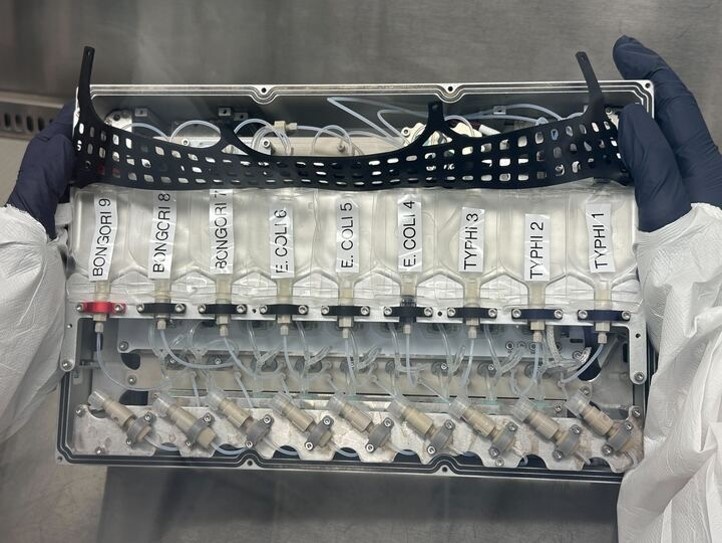Scientists are sending a number of strains of disease-causing micro organism to the Worldwide House Station as a part of the Crew-11 mission. This experiment is not the plot to some cheesy horror film, however a scientific investigation from the Sheba Medical Heart in Israel and the US-based firm House Tango with the purpose of higher understanding how micro organism unfold and behave beneath excessive circumstances. The experiment contains E. coli, together with micro organism that trigger ailments like typhoid fever and the an infection generally generally known as Salmonella.
After reaching the ISS, the experiment will see the completely different bacterial species develop earlier than being returned to Earth to be examined in opposition to counterparts that had been grown concurrently in an an identical lab beneath regular circumstances. The experiment’s outcomes will assist scientists perceive how micro organism reply to zero gravity and will assist astronauts, who’re extra susceptible to infections throughout missions resulting from stress, publicity to radiation and modifications in gravity. Nonetheless, the analysis may show helpful past house missions. With the onset of superbugs that present antibiotic resistance, the experiment may reveal methods to fight extra sturdy bacterial strains.
“This experiment will enable us, for the primary time, to systematically and molecularly map how the genetic expression profile of a number of pathogenic micro organism modifications in house,” Ohad Gal-Mor, head of the Infectious Illnesses Analysis Laboratory at Sheba, mentioned in a press launch.
The medical middle beforehand carried out a check with micro organism in simulated house circumstances, which confirmed a lowered capability to develop antibiotic resistance, however the newest experiment is the primary one to happen on the ISS. It is not the primary time scientists have studied micro organism’s habits in microgravity conditions, since researchers from the College of Houston examined how E. coli would develop in a simulated house surroundings again in 2017. Extra lately, NASA launched an experiment tasking astronauts to swab the interiors of the ISS and check them for proof of antibiotic-resistant micro organism.

